Nazi doctrine pigeonholed them as obedient mothers and wives, but a cadre of strong female supporters aided the rise of the Führer and some of his most trusted men.
ADOLF HITLER always spoke about his mother, Klara, who died in 1907 when she was only 47, as a saintly figure. Her major accomplishment, as he saw it, was to give birth to him. “Compared to all those educated, intellectual women, my mother was certainly only a little woman…but she has given the German people a great son,” he declared. Her birthday, August 12, was designated as a “day of honor for the German mother.”
Hitler’s broader message for German women flowed from his view of his idealized mother. According to Nazi doctrine, their role was to serve their husbands and raise children, leaving nearly everything else to men. Specifically, they were to raise the boys who would become warriors and the girls who would become the mothers of future warriors. Speaking to the National Socialist Women’s League in 1934, Hitler insisted that “every child [a woman] bears is a battle she endures for the life and death of her people.” As a reward for having many children, the Nazis handed out the Cross of Honor of the German Mother—a bronze one for four or five children, silver for six or seven, and gold for eight or more.
Yet there is much more to the story of the role that women played in the Third Reich than the official Nazi Party rhetoric suggests. As Hitler admitted, women “played a not insignificant part in my political career.” If anything, that is an understatement.
The women he was referencing were not the rank-and-file female concentration camp guards and others who directly implemented Nazi racial doctrine. Instead, these were the women who, because of their early proximity to Hitler or his top officials, facilitated the Nazis’ rise to power and were complicit in the consequences right up until the end of the war.
FROM HIS EARLIEST DAYS as a rabble-rouser in Munich, Hitler recognized the importance of appealing to women. As Dietrich Eckart, a founder of the tiny German Workers’ Party that soon transformed itself into the Nazi Party, explained in 1919, Germany needed a savior who would be a bachelor. “Then we shall bring in the women,” he maintained. It was a concept that Hitler adopted as his own, regularly explaining: “My bride is Germany.”
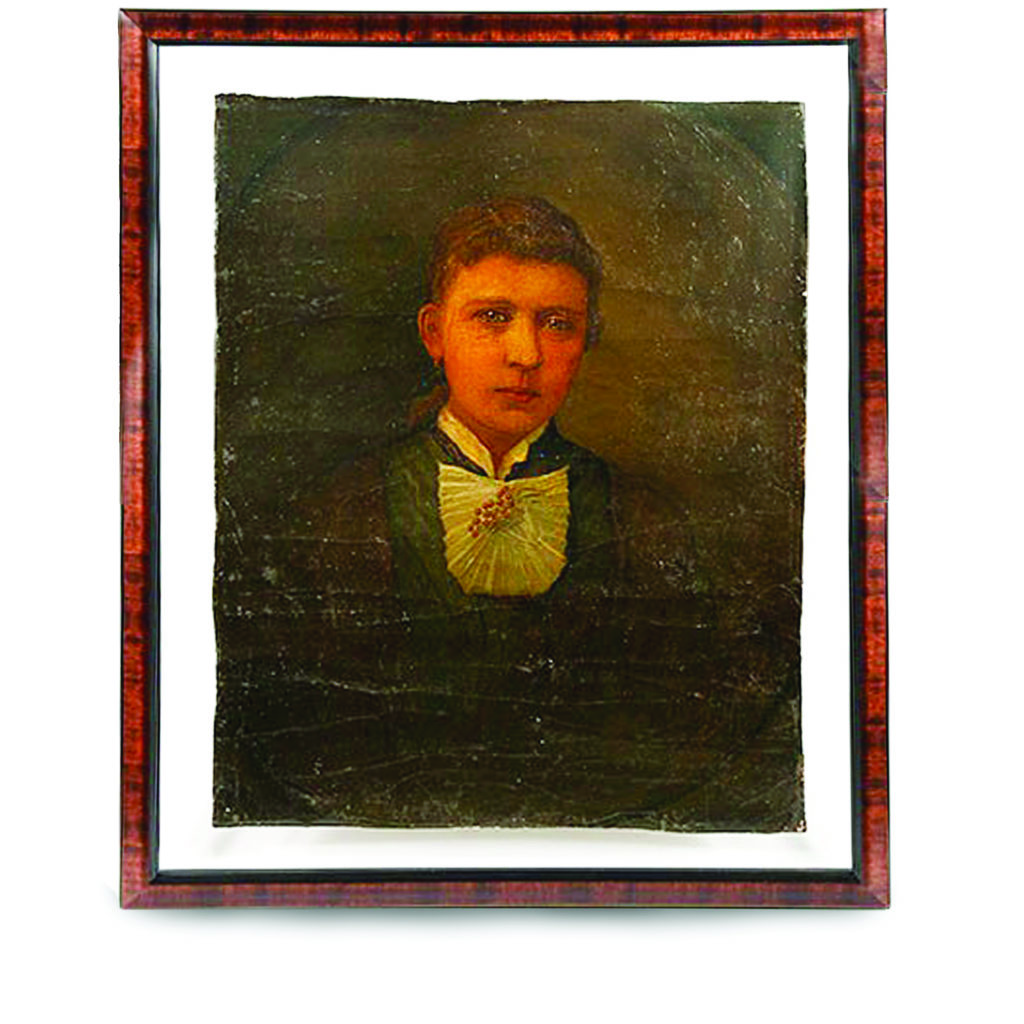
As difficult as it may be to imagine today, this contributed to the sexually charged magnetism the young Hitler exuded. He presented himself as unattached to any woman but married to his mission, making him theoretically unattainable—but, for many of his female followers, an object of longing.
At his early rallies, Hitler deliberately placed female supporters in the front rows. “He had a lively appreciation of women as a political influence,” his photographer Heinrich Hoffmann wrote in his postwar memoir, Hitler Was My Friend. Their applause and enthusiasm helped ensure a good reception to his speeches. And at a time when such gatherings often turned into outright brawls, the women also served as a buffer, preventing his opponents from getting too near him.
Hoffmann added: “These women were the best propagandists the Party had: they persuaded their husbands to join Hitler, they sacrificed their spare time to their political enthusiasms and they devoted themselves utterly and selflessly to the cause of the Party’s interests.” In the case of the women who gained entry to what amounted to Hitler’s court, the “selflessly” part did not always apply: as the Nazi leader’s prospects improved, some were clearly motivated by their desires to elevate their husbands to powerful positions.
WHILE HITLER EXPLOITED his listeners’ frustrations with the economic and political chaos that Germany faced after its humiliating defeat in World War I, many of those who enlisted in his cause immediately embraced the most poisonous tenet of his racial doctrine. They were not put off by his rabid anti-Semitism; they were excited by it. This included his women followers.
Ilse Pröhl, a student at the University of Munich, joined the Nazi Party in 1921, explaining to a former teacher in a letter: “We are anti-Semites. Consistently, rigorously, without exceptions! The two basic pillars of our movement—national, and social—are anchored in the meaning of this anti-Semitism.” Her future husband, Rudolf Hess, was a leading member of the fledgling party and constantly at Hitler’s side. The couple were not only joined in marriage, with Hitler serving as the godfather of their only child; they also reinforced each other’s blind devotion to the Führer. She would be one of the readers of Hitler’s autobiographical screed Mein Kampf before its publication.
Ironically, the Weimar Republic, with its liberal laws and norms, offered a wide array of new opportunities for German women. Women were studying all sorts of subjects in the universities—law, economics, history, engineering—and entering professions once reserved for men. Yet many women helped propel Hitler’s drive to impose a totalitarian ideology that promised to reverse those gains.
A trio of prominent women offered Hitler his entrée to Bavaria’s high society, sprucing up his meager wardrobe, training him in the social graces, and introducing him to top industrialists and other influential figures. They included Helene Bechstein, the wife of the owner of the Bechstein piano company; Elsa Bruckmann, the wife of a publishing magnate; and Winifred Wagner, Richard Wagner’s English-born daughter-in-law, who oversaw the prestigious Bayreuth Festival featuring the composer’s works.
Bechstein hosted receptions at her elegant Berlin villa and, in Munich, at the Four Seasons Hotel. While she invited a mixture of high society, she also favored the backers of new nationalist movements. She and her husband Edwin helped finance Eckart’s anti-Semitic weekly Auf gut Deutsch (In Plain German).
In June 1921, Eckart introduced Hitler to the Bechsteins—and Helene quickly took him under her wing. According to Otto Strasser, an early Nazi who later broke with Hitler, Bechstein, who was 13 years older than Hitler, “lavished on him an ecstatic and faintly maternal devotion.” She supplied him with new clothes and taught him table manners. Soon, he was kissing women’s hands at her salons like an old-school gentleman.
By most accounts, their relationship was platonic, but, as Strasser recalled, the image they presented underscored Helene’s devotion to Hitler. “When they were alone, or occasionally in front of friends, he would sit at his hostess’s feet, lay his head on her opulent bosom and close his eyes, while her beautiful white hand caressed her big baby’s hair, disturbing the historic forelock on the future dictator’s brow,” he wrote. As she did so, she would murmur, “Mein Wölfchen” (my little wolf).
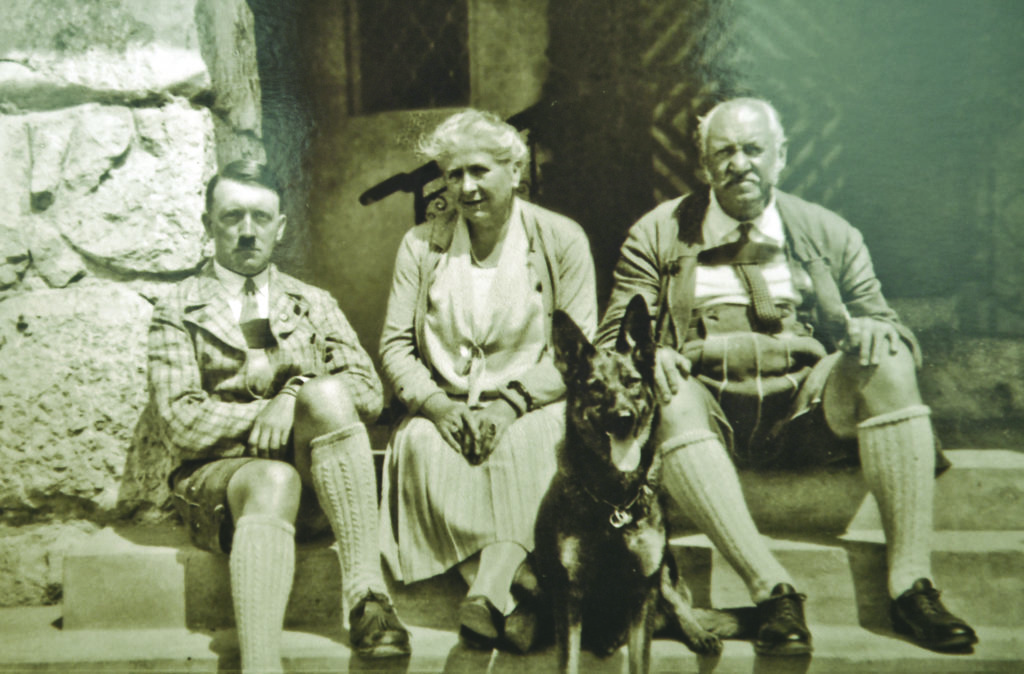
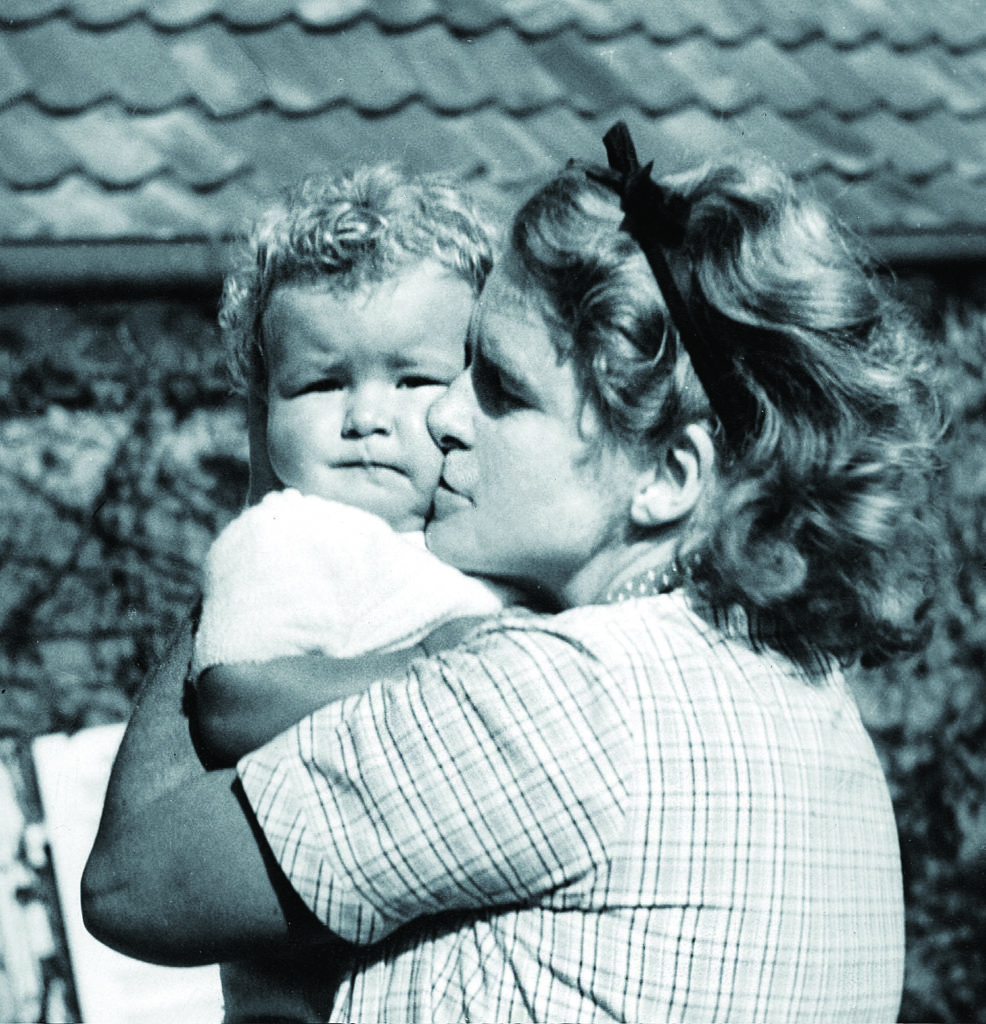
Helene was more than the “little wolf’s” society hostess. She provided him with funds for his Nazi Party, at times even sacrificing expensive pieces of jewelry, and gave him a whip, which Hitler incorporated into his image by regularly carrying with him. Her society rival Elsa Bruckmann, a Romanian princess married to publisher Hugo Bruckmann, also hosted salons and introduced Hitler to anyone who could help his cause. She, too, showered him with gifts—including another whip.
But it was the younger Winifred Wagner who developed the most extensive relationship with Hitler. Orphaned in England at the age of two, she was in poor health when, in 1907 at age nine, she was sent to stay with elderly distant relatives in Berlin, the Klindworths. What was supposed to be a six-week stay turned into a permanent arrangement. Karl Klindworth was a piano teacher who had trained under Franz Liszt, founded his own conservatory, and known Richard Wagner. Those links with the Wagner family led to the marriage of Winifred to his son Siegfried; she was 18 at the time, while he was 46. They settled in Bayreuth, where Winifred had four children and took over the running of the festival.
Winifred was often invited to the Bechsteins’ home, and it was through them that in 1923 she first met Hitler. As a devotee of Wagner’s music, he was delighted by her invitation to visit the Wagner household. Hitler was also impressed by the writings of Houston Stewart Chamberlain, the British-born proponent of Germanic racial theories who was married to Richard Wagner’s daughter Eva. Another indication of how intertwined these circles were: Chamberlain’s publisher was Hugo Bruckmann.
So began a friendship between Winifred and Hitler, resulting in his regular visits to Bayreuth that allowed him to pursue his obsession with Wagner’s music while meeting the glitterati who gathered at the festival every year. It was such a close relationship that after Siegfried’s death in 1930, rumors spread that the two might wed. Hitler also developed a close relationship with Winifred’s children. But it’s unlikely Hitler ever imagined marrying Winifred.
Unlike Bechstein and Bruckmann, Winifred could not offer him major financial help since the festival struggled to make ends meet. In fact, once Hitler became chancellor, he and other top officials helped fill its seats for performances with members of Nazi organizations, thus ensuring its survival. That made it look increasingly like a showcase for the Third Reich. From exile, the writer Thomas Mann decried Bayreuth as “Hitler’s court theater.”
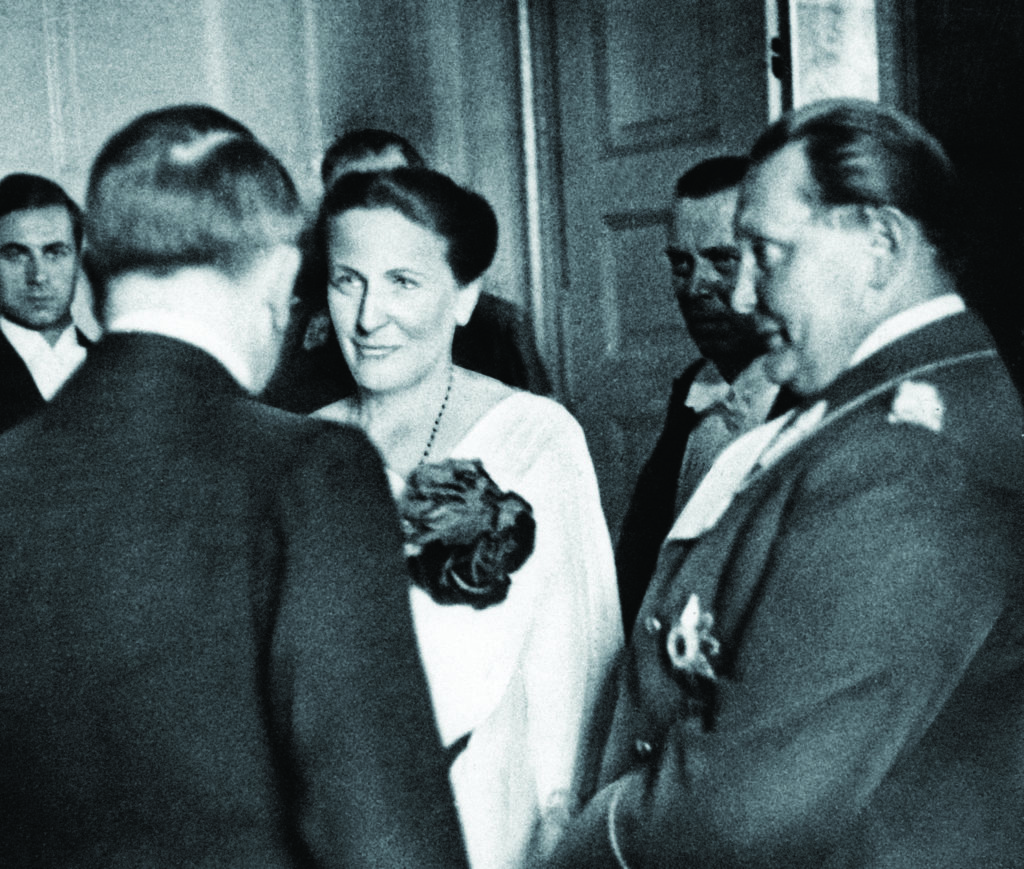
Among the women with close ties to Hitler in his early days, Helen Hanfstaengl played a special role, which included possibly saving his life. Born in New York to German immigrant parents, she had married Ernst “Putzi” Hanfstaengl, a Harvard graduate of German American parentage who became Hitler’s press spokesman after the couple moved to Munich in 1921 (see also “Hitler’s Harvard Man,”). Hitler, he recounted, “was delighted with my wife, who was blond and beautiful and American.”
Helen was similarly enchanted with Hitler, who was a frequent visitor to their apartment, where he would expound upon “his plans and hopes for the renaissance of the German Reich,” as she put it. According to her husband, Hitler developed “one of his theoretical passions” for Helen. Putzi believed Hitler was impotent and that this passion never went beyond kissing her hand and sending her flowers. “He had no normal sex life,” Putzi wrote later. Helen agreed that her admirer was probably “a neuter,” but she had no doubt that he was strongly attracted to her.
Many of the questions about Hitler’s sexuality and whatever intimate relations he may or may not have had with women remain unanswered. But the attraction Hitler felt toward Helen led to a momentous episode in his early career. After Hitler’s attempt to overthrow the Weimar Republic—the Beer Hall Putsch—ended in failure with the state police firing on his marching Brownshirts on November 9, 1923, Hitler fled the scene. Seeking refuge in the Hanfstaengl country house about an hour from Munich, he found only Helen there—and appeared to be ready to shoot himself as the police closed in. Helen recalled her reaction when he picked up his revolver: “I was alert, grasped his arm and took the weapon away from him.” She berated him for contemplating suicide, which would have meant abandoning his followers. Hitler sank into a chair, burying his head in his hands. Helen took advantage of that moment to hide the gun in a flour bin, and Hitler was arrested.
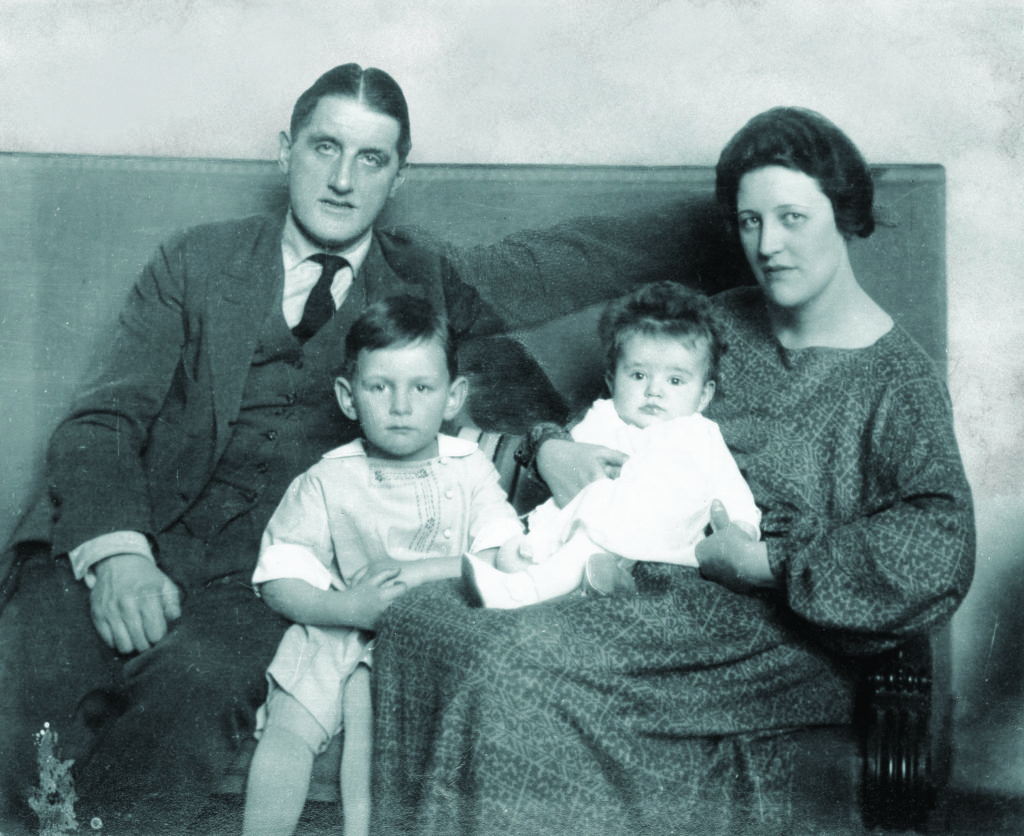
HITLER WAS NOT THE ONLY Nazi leader saved by a woman. Hermann Göring, the future commander of the Luftwaffe, parlayed his fame as a World War I ace fighter pilot into a short career afterward as a barnstorming performer of aerial stunts in Denmark and Sweden. When he met Carin von Kantzow, the daughter of a Swedish aristocrat, the two fell instantly in love—despite the fact that Carin was still married to a Swedish army officer with whom she had a young son. “He is the man I have always dreamed about,” Carin told her sister Fanny. At the time, Göring was a slim and handsome flyer, a far cry from the bloated cartoonish figure he would become later.
Carin’s family supported German nationalist causes, and they encouraged Göring’s interest in his homeland’s political turmoil. After Carin obtained a divorce so that she was free to marry Göring in 1923, she moved to Munich with him. By then, he had joined the Nazis—and Carin delighted in the company of Hitler and his entourage when they would drop by their house. As Fanny recalled, “Hitler’s sense of humor showed itself in gay stories, observations and witticisms, and Carin’s spontaneous and wholehearted reaction to them made her a delightful audience.”
During the Beer Hall Putsch, Göring was shot in the groin and hip. Although she was running a high fever, Carin helped his bodyguards smuggle her wounded husband across the border to Austria. Writing to her mother, she insisted that “Hitler’s cause” was not lost; in fact, “the drive is stronger than ever before.”
During his slow recovery, Göring received multiple morphine injections, which led to the addiction that plagued him for much of the rest of his life. The couple then moved to Italy, where his treatment continued. In 1925, when Hitler was no longer in prison and the hunt for his accomplices had been called off in Germany, Carin traveled to Munich to see him. She returned to her husband with funds from Hitler, along with a signed photo of himself inscribed “to the respected wife of my SA commander.”
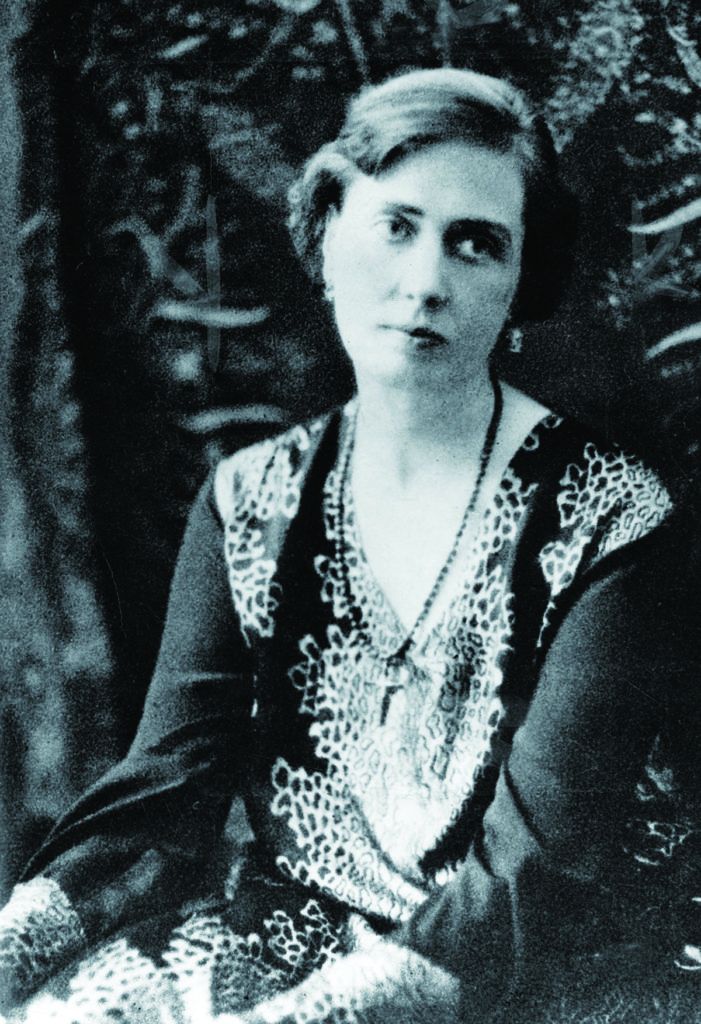
After a stint back in Sweden, the Görings returned to Germany. Despite her frail health exacerbated by tuberculosis, Carin dedicated herself to aiding the Nazi Party. Fritz Thyssen, the industrialist who made large donations to Hitler’s movement, maintained close ties to the Görings. “At that time Göring seemed a most agreeable person,” Thyssen recalled after he broke with the Nazis in 1938. As for Carin, she was “an exceedingly charming woman,” he added, leaving no doubt that she softened the image of her husband and the cause he served. In 1931, she died from heart failure at the age of 42, leaving Göring visibly bereft.
HITLER’S ARREST did nothing to dampen the enthusiasm of his other prominent women supporters. Just three days after the Beer Hall Putsch, Winifred Wagner wrote: “Believe me, in spite of everything, Adolf Hitler is the man of the future.” When Hitler was sent to prison, she wrote to assure him of her family’s continued support, sending him packages with food, clothing, and other supplies. In all this, she competed with Helene Bechstein and Elsa Bruckmann, who visited Landsberg prison to deliver their offerings directly.
On December 20, 1924, Hitler was released after serving only nine months of his original five-year sentence. By then, his party had lost momentum. The country’s improving economic situation, thanks to American efforts to ease the pressure for reparation payments and extend new loans, meant that radical parties of both the left and the right had diminishing appeal. The Nazis won a meager 2.6 percent of the votes in the May 1928 Reichstag elections.
Yet the women of the court warmly welcomed Hitler back to Munich and Bayreuth. Bechstein provided him with a new Mercedes and a driver. Even while his party gained little traction, his personal circumstances continued to improve. Thanks to the generosity of such donors, Hitler moved from his small rented bedroom to a luxurious, sprawling apartment on Prinzregentenplatz, one of Munich’s most fashionable addresses, in early October 1929—right before the Wall Street crash, and before anyone could have guessed how quickly his political fortunes would turn.
The ensuing global economic collapse allowed Hitler to reignite his movement. But it was Hitler’s personal life during this period that came close to derailing his political resurgence—specifically, his relationship with his half-sister’s daughter Geli Raubal. Vivacious and flirtatious, she had come to Munich from Vienna in 1925 at the age of 17, ostensibly to study. Soon she was preoccupied with her uncle, nearly 20 years her senior. She appeared at his side at cafes, restaurants, and the opera. In 1929 she moved into the apartment on Prinzregentenplatz. She had her own room there, but rumors about the nature of their relationship were rife in party circles.
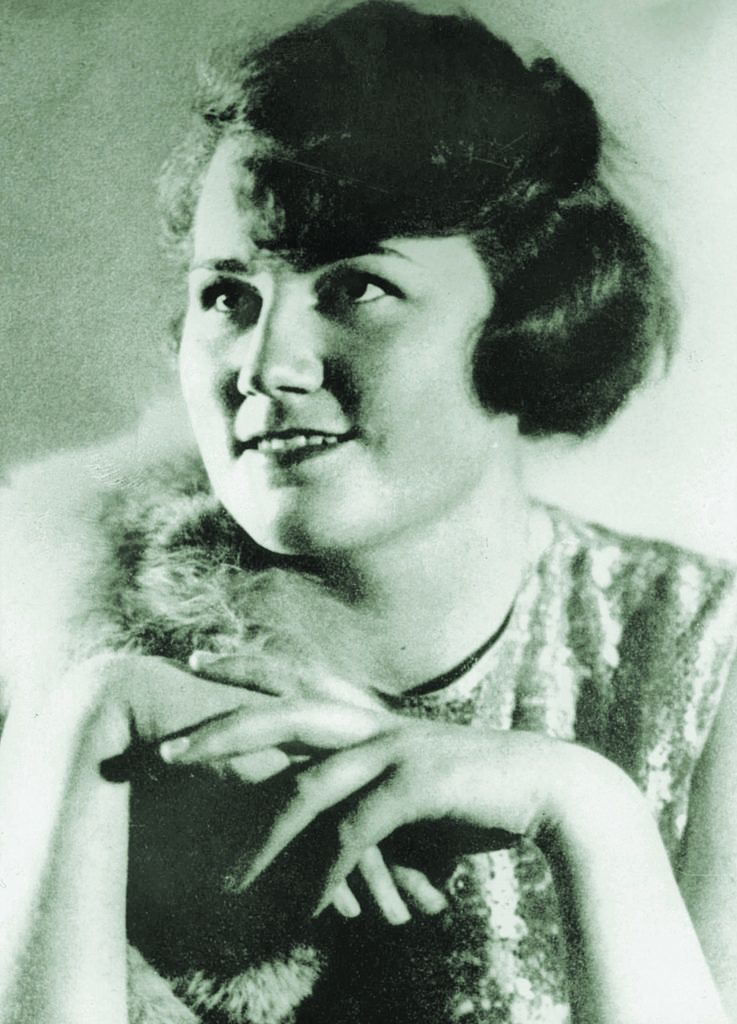
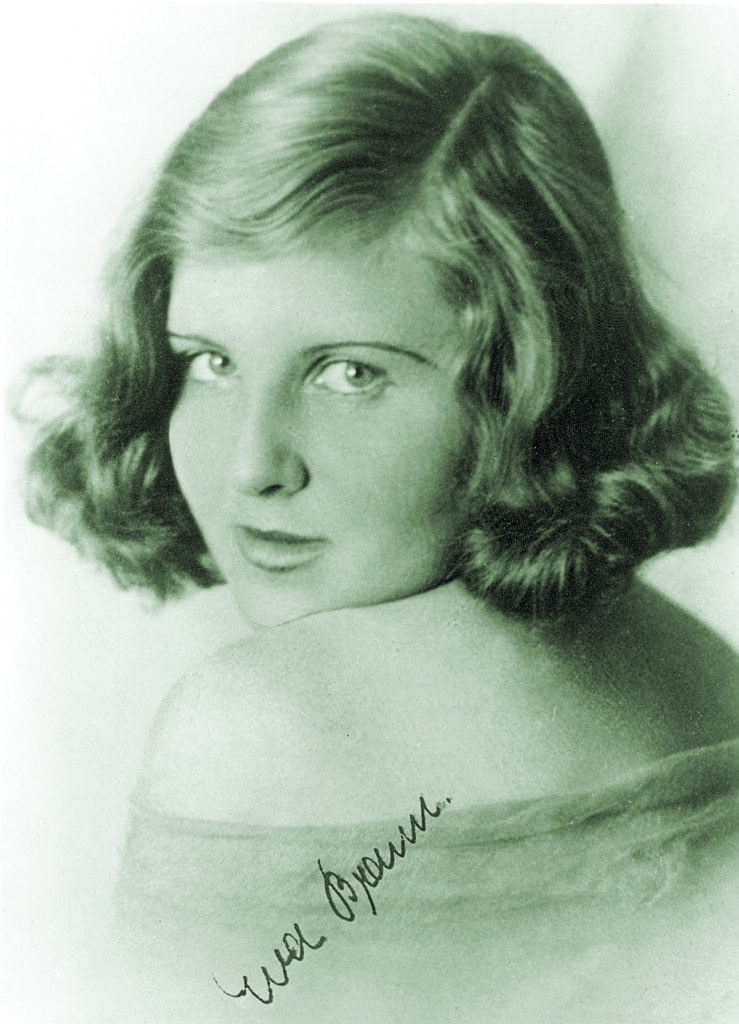
Otto Strasser claimed that Hitler forced Geli to try to arouse him with humiliating sexual practices. On September 18, 1931, Geli was found dead in her room, shot near the heart at the age of 23. Earlier, she and Hitler had been overheard having a loud argument. Some reports indicated Geli had been furious with Hitler’s growing attention to another young woman, Eva Braun; other accounts claimed Geli simply wanted to escape his control and leave Munich.
Officially, Geli’s death was ruled a suicide, but Hanfstaengl and other propagandists had to work hard to quell reports in local leftist papers that this was a possible cover-up. They largely succeeded, averting a damaging scandal. “The whole affair was hushed up and glossed over as much as possible,” Putzi recalled.
Yet none of this—the questionable nature of Hitler’s relationship with Geli or her death—dampened the enthusiasm of the women of his court. Joseph Goebbels’s wife, Magda, a new major figure in that circle, opined: “In a sense Hitler is simply not human—unreachable and untouchable.” As Hitler had understood, the mystery surrounding his romantic life only strengthened his appeal to women.
AS THE NAZIS GAINED STRENGTH, several ambitious women pushed their husbands to get on board. Annelies Henkell was a member of the family that controlled most of the market for Sekt, or German sparkling wine. In 1920, she married Joachim von Ribbentrop, who had lived abroad and worked as a wine merchant. Viewed as the dull blade in this wealthy family, he was content to enjoy a comfortable living selling the family’s products. But Annelies was ruthlessly driven, and both she and her husband joined the Nazi Party in 1932 just as it was scoring major victories at the polls.
The couple offered their house in the posh Dahlem section of Berlin as the venue for the secret talks that led to Hitler’s appointment as chancellor on January 30, 1933. Partly as a reward, Ribbentrop was later posted to London as ambassador, where Annelies spent lavishly on redoing the residence and throwing parties. Next, Hitler appointed Ribbentrop foreign minister. Despite his poor performance in both posts, Annelies could rightfully boast about her proximity to power.
Another latecomer to the Nazi Party was Reinhard Heydrich. He had embarked on a career as a navy officer, but he was abruptly dismissed in 1931 because of his womanizing. Although he had been contemptuous of the Nazis up to that point, Lina, the woman he was about to marry, urged him to offer his services to them. While opportunistic, her advice was consistent with her right-wing convictions. “We felt provoked by the Jews,” she wrote. She encouraged Reinhard to join the SS and meet Heinrich Himmler, which marked the start of a partnership that figured large in the preparations for the Holocaust. After Heydrich was assassinated in Prague in 1942, Lina defended him for the rest of her life.
TO MAINTAIN THE ILLUSION that he was unattached, Hitler kept his personal relationships hidden from the German public. No woman was closer to him than Eva Braun, usually described as his mistress. Their relationship was well-known to visitors to the Berghof, his Alpine retreat, where she circulated freely. Still, Hitler frequently selected Magda Goebbels, the most elegant of the top wives, or Emmy Göring, the actress Hermann married after Carin’s death, to escort him in public and play the role of first lady.
Since the second Frau Göring came from the world of the theater, she had worked with Jews often and at first attempted to protect some of her former colleagues. She appealed to her husband to help them, and she maintained after the war that he had often tried to do so.
Winifred Wagner also claimed she had aided those facing persecution by seeking to use her connections to Hitler. Whatever initial success she may have had, the German leader quickly made clear his impatience with such appeals. Bayreuth, like other venues, was instructed not to employ Jews—and, after briefly managing to delay the full implementation of this policy, Winifred went along with it. Moreover, Winifred continued to proclaim her loyalty to Hitler—and prided herself on not changing her tune after the war when most of her countrymen denied their previous enthusiastic support for him.
But Winifred’s daughter Friedeland, who was born in 1918 and grew up chatting with Hitler during his visits to Bayreuth, became skeptical of her mother’s faith in him. At a lunch with Hitler and Goebbels after Kristallnacht in 1938, Magda Goebbels responded to Friedeland’s question about the treatment of Jews with a sharp rebuke. “You mustn’t pity them, my child,” she said. “Never feel pity.”
MOST OF THE WOMEN in Hitler’s court never wavered in their devotion to the Third Reich—even when their husbands floated increasingly outlandish theories about the role that women should play in it. Early on, the regime began urging unmarried German women to have children, particularly with the country’s warriors. Himmler argued that it would be “a natural development to break with monogamy.” Bigamy, he argued, was preferred since “each woman would act as a stimulus to the other so that both would try to be their husband’s dream woman.”
Himmler also explained that since many top Nazi leaders’ first wives were “unable to rise in the world” with their husbands, they needed to be replaced by “chosen women” who would attend a special academy to educate and refine them. Only true Aryans, with blond hair and blue eyes, would be admitted. Despite Hitler’s disapproval of divorce, Himmler envisaged separating the first wives “honorably” to make way for their upgraded replacements.
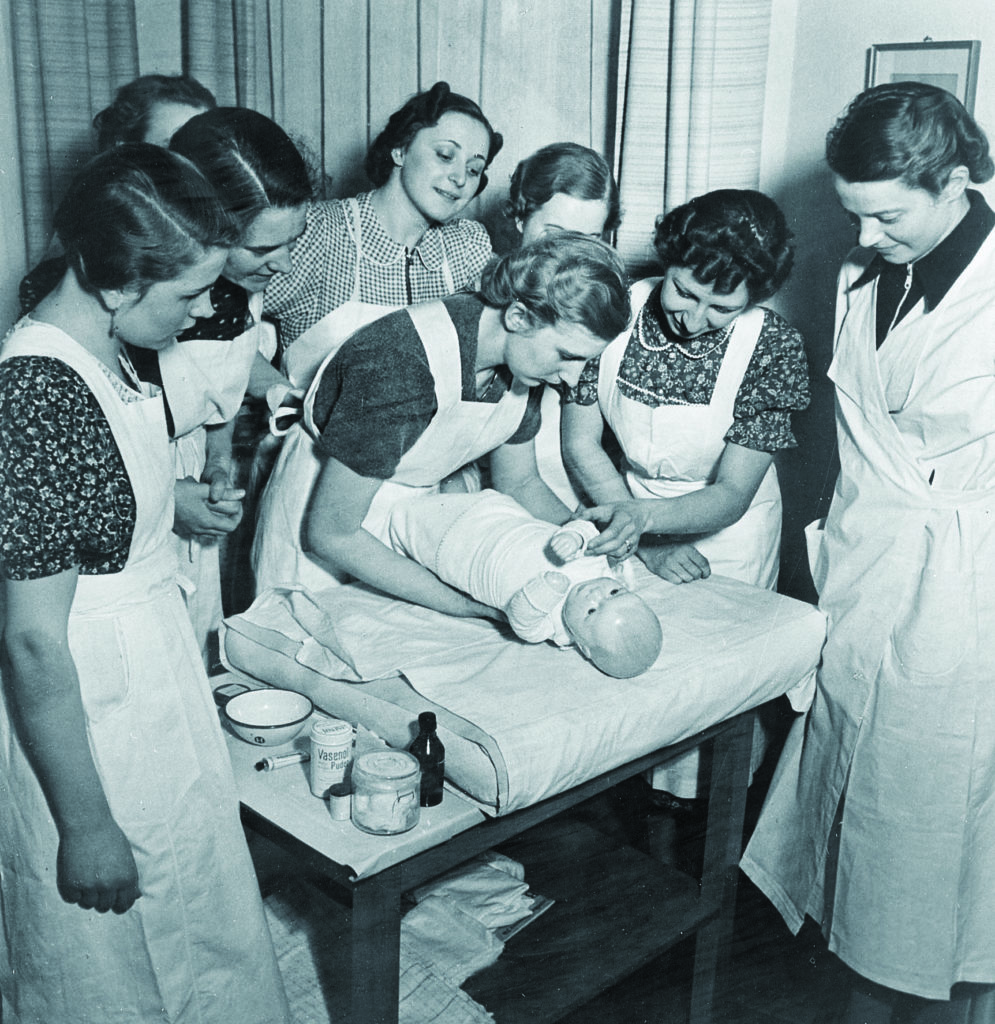
Himmler acted upon his beliefs before any of these theories could be implemented. He openly shared his life with his young secretary, Hedwig Potthast, who bore him two children. Marga Himmler, his plain-looking wife with whom he had a daughter, was seven years his senior and completely subservient to him. Unlike the other wives of the “Golden Pheasants,” as the Nazi elite was called, she never aspired to a more glamorous lifestyle.
This was even more true for Gerda Bormann, the wife of Martin Bormann, Hitler’s powerful personal secretary. Although Gerda bore him 10 children and Hitler personally honored her by sending her roses for her birthday each year, Martin’s disdainful treatment of Gerda startled even some of his Nazi guests. He embarked on numerous affairs, enthusiastically reporting on his conquests to her. In a letter to Gerda in 1944, he boasted how one woman “could not resist” him.
Nothing her husband did could undermine Gerda’s faith in him. She reassured him that she was happy for both him and his new lover rather than jealous. He was performing such important work that nothing else mattered. “I cannot imagine how the Führer would manage without you,” she wrote to him. She concluded with a parting shot at the others competing for Hitler’s attention. They were consumed by “ambition and vanity,” she wrote.
Most of the top women shared those traits. Hans Frank, Hitler’s lawyer who became the Nazi leader of occupied Poland, had a notoriously terrible marriage full of affairs and recriminations. But his wife Brigitte, who regarded Jewish ghettos as a source for furs and jewels, declared: “I’d rather be widowed than divorced from a Reichsminister.”
The worse the situation looked for the Third Reich, the more important proximity to power became. As the German armies re-treated, Eva Braun came increasingly out of the shadows, strengthening Hitler’s conviction that he should never surrender, no matter what the cost to the German people. On April 30, 1945, the day after Hitler finally married her in his bunker in Berlin, Braun willingly died with him there, proud that they would be together in death. Magda and Joseph Goebbels followed suit the next day by murdering their six children and committing suicide. Magda’s explanation: she could not imagine her children living in a world without Hitler.
The women in Hitler’s court who survived continued to live in their world of self-delusion. Emmy Göring portrayed her husband as free of the anti-Semitic fanaticism of his boss and comrades, ignoring all evidence to the contrary. At their last meeting at Nuremberg after he was condemned to death, she told him: “I shall think that you died for Germany.” When he bit into a cyanide pill on October 15, 1946, to avoid the hangman’s noose, she felt “overwhelmed,” she recalled in her memoir. “How could such a man have been made to suffer such a death—he who had always given so much to others, kindliness, the love of his fellow man, compassion and fidelity!”
Hitler’s women never abandoned their self-justifying fantasies, thus demonstrating the Führer’s continued power over them—even after he had perished along with his millions of victims. ✯
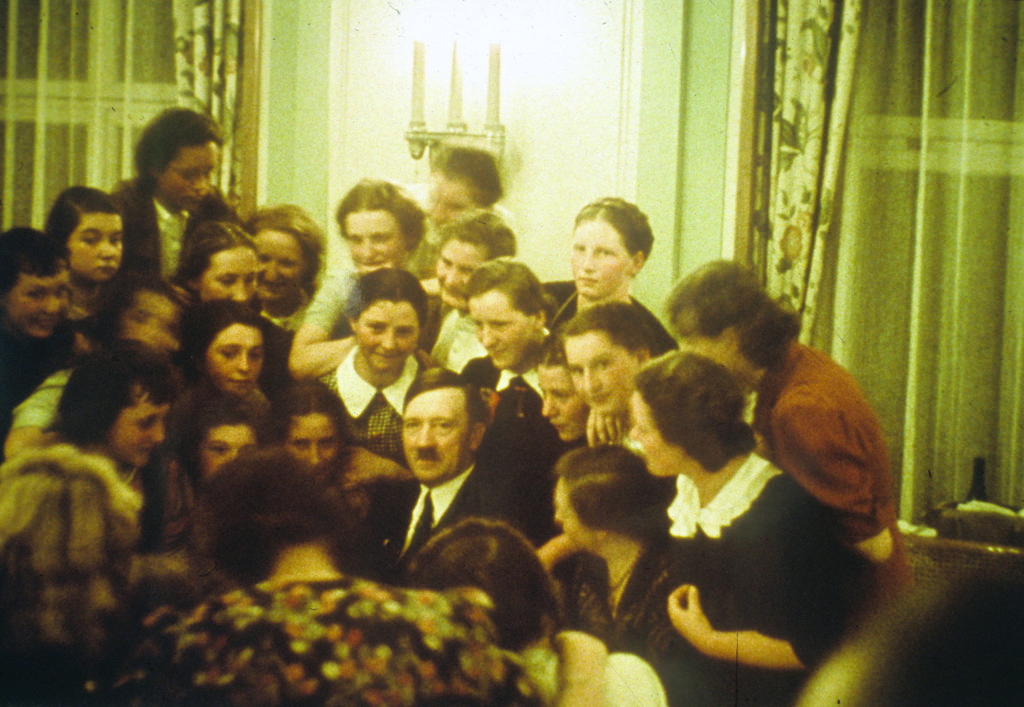
—Andrew Nagorski is an award-winning journalist and author who spent more than three decades as a foreign correspondent and editor for Newsweek. While researching his books about the Third Reich and World War II—including his most recent title, 1941: The Year Germany Lost the War (2019—Nagorski was struck by the critical roles several women played in aiding and abetting Hitler’s career.
This article was published in the April 2020 issue of World War II.





